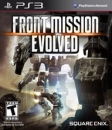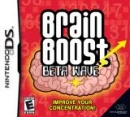WilliamWatts said:
joeorc said:
WilliamWatts said:
Its simply not worth it. $1B worth of HDDVD equipment doesn't really offset a marginal cost paid by publishers a couple of years down the track and certainly not for a marginal number of games which would stand to really benefit. However paying more money for say a better memory architecture, more ED-Ram etc would pay off from launch vs the PS3 and relative to itself on its own in a much better fashion. If more ED-Ram didn't meet their cost/benefit criteria then I doubt that an HD-DVD drive would and continue paying off better than HD-DVD or Blu Ray because every single game has a graphical interface but not every game requires more than 7GB of space.
|
but would that same HD DVD equipment cost 1B today if the HD DVD would have one the format war?
not to mention the IHD licence fee's that Microsoft would have made per ever HD TOPSET BOX.
like i sttated it was a risk.
and also yes you are right not every game would be required to need more than 7GB of space right now but say in 3 year's what then?
we do not know. my Q: still still stand's what would Microsoft put as its optical drive in the next Xbox it releases, would it still use DVD or would it go for HD DVD optical drive or no OPTICAL drive at all, and go all digital download and offer an external optical drive if you want to play xbox360 game's on the new ver. of the xbox.
my point is would the xbox360 suffer loss of support when the next xbox come's out due to the next xbox having better overall hardware, what would seperate it mainly from the xbox360?
the longer this generation goes on the less likely the jump frm the previous generation to the current system's had a much bigger impact than I think will happen in the next generation system's get released. I Think the impact will no be as great due to thestrength of each system's support
have you ever seen a third place system get this much support as much as the ps3 has already attained already for a 3rd place console? let alone with
a) more system's on the market at one time vs' previous generation's all competing for you time as a gamer and your money.
b) when the systems are not even 5 year's old into the generation
remember the previous gen.
ps2 had a 300Mhz
xbox360 had a 766 Mhz
the game cube had 405 Mhz
today we have system's in the 3,2 Ghz, and with multiple core's
less static system because of the software can be tweaked.
that bery same thing that make's thes unit's better as time goe's on make's it one of the very reason's they would in all likelyhood remain on the shelf longer thus the longer the system keep's selling the cheaper it become's to manufacture , so how would the HD DVD 15 GB disc not benefit the xbox360 over time due to the cost's would be lower. unless you could not see the xbox360 notbeing able to sell more aystem's when the price goes to $99.00. what would the sale's of a $99.00 xbox360 compard to the sale's of a $99.00 PS2?
|
It was a risk that they were unwilling to take. Had they taken it they would be unlikely to ever break even with the Xbox 360. It would have also probably torpedoed the Arcade SKU as the read speed for the HD-DVD drives probably weren't that great back in 2005. Its not about whether the system would benefit, of course it would but whether it would be a cost effective benefit that Microsoft would be willing to lay out hard cash for.
If we're talking about 3 years from now in the context of an expected consoles life-cycle from the beginning to end its pretty irrelevant. 3 years from now is 7 years from launch and consoles are expected to 'max out' their hardware capabilities sometime between the fourth and sixth year. So now we're seeing a few games 'max out' the DVD drive which is to be expected. However in the context of the capabilities of a console, it would still be a struggle for most games to effectively make use of the extra space. The system was probably expected to have a replacement this year or next year in 2005 so look at it from that perspective.
The question of what drive for a next generation system really depends on the entire ecosystem of technology they develop and which is available. Its pretty assured that 6* Blu Ray drives will be common enough, perhaps even 8* Blu Ray Drives with effectively 3-4* the overall bandwidth so just from that it makes sense to use the drive even if the space isn't needed overall.
The speed of a processor is not an effective determination of its capabilities. Also just because software can be tweaked it doesn't change the fundamentals of the system in the quantity of texture ram available etc. I also doubt that the system would suffer a drop in support because of the DVD drive as a lot of companies are revamping their content delivery for online networks and they cannot effectively deliver more than a DVD worth of content over the internet.
|
that's the main problem in context because in this generation the multi-core processor is the main development not single core system's like before, even though the ps2 was multicore it was in no way like the extent of the PS3 or the XBOX360 I have my doubt's in say 3 year's if they would max out these hardware system's for the simple fact that many developer's today right now are just getting the hang of multi=core game development. they have had to change their whole way of developemnt for game console's. now add in NATEL AND ARC into the Mix you have even more thing's that you can do with the system.
as for replacement around this time, I just do not think that was even on Microsoft's radar just look at what game's have been released sofar for the game and how much resources the developer's have already done sofar, look at gear's of war , forza great stunning game's for the xbox360 atre those game's even maxing out the xbox360?
I very much dowbt it
there is 3 core's under that hood each running a 3.2 Ghzm rand and other thing's do play a big part but also how developer's use those resources also matter's.
say for instance
Uncharted 2 look's stunning but the developer's still say's there is plenty of room to improve.
the benefit's of this generation of Multi-core development has a learning curve but also it's leading to some very rich and fantastic game and that has more to do with skill and experience with developemnt of said platform over time.
the next system's will be multi-core from here on out and developer's are still learning..
look at ALAN WAKE as an EXAMPLE
Remedy on making Alan Wake
DICE 2010: Finnish studio's president Matias Myllyrinne discusses the "method behind our madness" during the psychological thriller's half-decade in development.
Has Remedy Entertainment really not shipped a game since October 2003? "Some of your parents may remember our last game, Max Payne 2," joked Matias Myllyrinne, president of the Finnish studio at his DICE Summit session this afternoon. However, with Alan Wake now set for a May 18 release, the designer took the stage to explain why the psychological horror game has taken so long to make. "We'll discuss the method behind our madness," he declared.
First off, Myllyrinne said Alan Wake's long development cycle would not have been possible without the support of Microsoft. The company's backing is "letting us punch above our own weight," said an effusively thankful Myllyrinne. He did not mention that as part of that support, the PC version of the now Xbox 360-exclusive game was put on indefinite hold last year.
Remedy's principles are at the key of its development, and first among these is the core value of "focus." Myllyrinne said that this results in better games. He declared he'd rather ship a game which sells 4 million units every four years than release a game that sells 1 million units every year.
Another key principle is "people" at Remedy, which uses a smaller team than most AAA developers. They focus on multi-talented people from all over the world: One Danish game designer has a background in drama, and a Brazilian level designer has a degree in psychology, which came in handy on Alan Wake.
To get the most out of his smaller staff, Myllyrinne encourages active--sometimes even heated--debate between coworkers, because new ideas can arise from conflict. Remedy has also invested heavily in tools and technology, allowing for maximum worker productivity. As a result, Myllyrinne said only "three or four" members of the core Alan Wake team left during the game's development.
Finally, Remedy has a focus on branding and is very involved with the game's marketing. Myllyrinne said he wants every add to make viewers feel like they're in a thriller.
Wheeling to Alan Wake in particular, Myllyrinne said that they set out to make a scary game, and deliberately modeled the town of Bright Falls after TV's fictional hamlet of Twin Peaks. However, the game's three stages of development--pre-production, production, and the extensive post-production Remedy is known for--ended up taking nearly twice as long as originally planned. Myllyrinne joked this was "taking the long road home."
Luckily, Remedy had enough Max Payne money and Microsoft support to bulk up to cope with the increased demands of current-generation console games. Although still small, the shop has increased payroll by 10-15 percent each year and uses outsourcing and freelancers extensively. As an example, two companies--one in Los Angeles and the other in Germany--are handling the game's sound design.
The character of Alan Wake has evolved as well, going from an outdoorsman of sorts to a tired, more paranoid figure. To make him as realistic as possible--something Myllyrinne feels is key in a thriller--they primarily used many concept photos instead of concept art for his character.
For Alan Wake's enemies, they wanted them to seem "just a bit off." To give the enemies a ghostly edge, they poured water on the concept drawings and let the ink run. The result are the shadowy, blurry figures which can be seen in the game's trailers.
Remedy also decided to reuse some elements from Max Payne 2 for what they call "near-miss moments." When an enemy attacks Alan Wake and nearly hits him, the action slows and then the camera angle changes. A brief demo showed the dramatic effect of these moments, especially when Max Payne pulls a flare out to vanquish a group of enemies in what Myllyrinne called "a Statue of Liberty moment."
All the aforementioned elements were shown together in a demo called the "Harvester of Sorrow," in which Alan Wake is attacked by a possessed grain combine which he must fend off with a flashlight. Once the shadowy driver takes enough damage, the machine disintegrates in a burst of shadow.
Myllyrinne said another big plus on Alan Wake development was the user testing assistance lent by Microsoft. So far, the game's controller scheme has been changed 18 times, and Myllyrinne thinks it will be 20 by the time it ships.
Remedy also gradually phased out the game's heads-up display for greater realism, including dumping a speedometer that appeared during driving sequences. "This isn't Need for Speed, so we didn't really need that."
Alan Wake's world is 10 kilometers by 10 kilometers of fully modeled terrain, based on over 60,000 photos taken in the Pacific Northwest. The Oregon town of Astoria was a particular inspiration, as was the state's Crater Lake National Park.
Unfortunately, Myllyrinne said the decision to make the game an open-world sandbox was a poor one, and had to ultimately be scaled back. The advantage of a more linear story is it allows for better pacing and emotional resonance. It also prevents jarring incongruity that could arise from random events. "When you have a guy show up to a love scene in a monster truck, you know something is wrong," Myllyrinne joked.
To help keep the game's development on track, Remedy would do intense work for five weeks and then every sixth week celebrate and focus on planning for the next phase. "You have to celebrate the small victories," said Myllyrinne in conclusion. When Alan Wake ships exactly three months from now, Remedy will be celebrating a big one.
http://uk.gamespot.com/news/6251528.html
remember that's with Microsoft's help, there is quite a number of Developer's that are just getting used to multi-core development for their software
moreso than in the past it's showing that not many developer's were ready as they would have liked for them to be.
when you go from single to multi-core there is some thing's like you may not have access to like mature API's, or toolset's that take the best advantage of hardware at the Time.
there is still plenty of Room for growth In my Opinion way more than just 3 year's worth,


















































